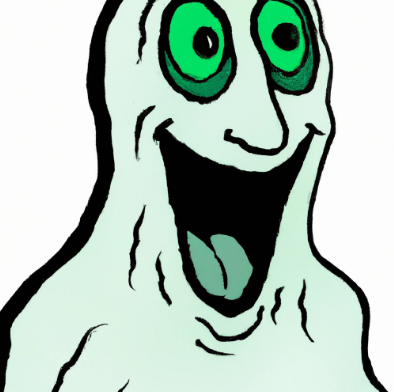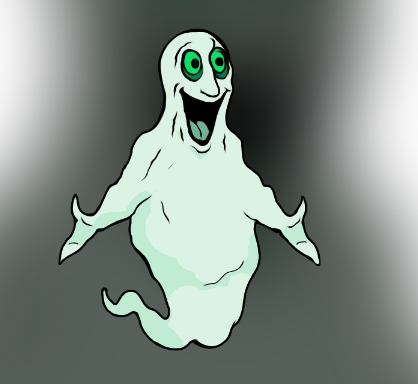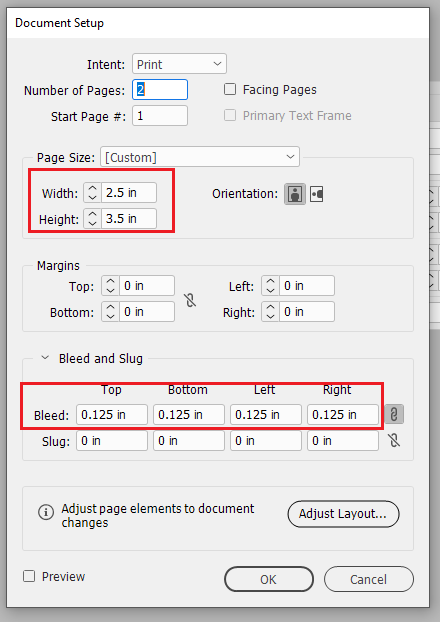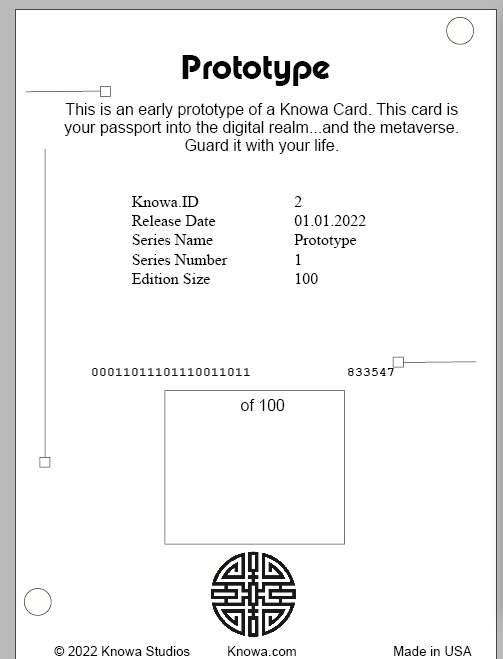
Concept Art for BOO THE GHOST
Boo is a character in our Halloween Series 1 set of collectible trading cards. He is a friendly, happy-go-lucky ghost with a great sense of humor. He is always playing jokes on real humans. He thinks it is funny, but it is actually kind of creepy.
Your Job
Step 1
The first step is to complete a full body version of this character based on the rough concept above. When finished, present it for approval. To get it approved, send an email to knowa@knowa.com or go through the message board.
Step 2

Once the full figure is approved, the next step is to create your front trading card design. Place your full body character into a 2.5 inch by 3.5 inch Adobe Creative file with 1/8 inch bleed, and make a trading card design from it. The final product is a cardboard, high gloss card printed using offset lithography.
Your canvas is in portrait mode, not landscape. Since this is a single character card, it is called a portrait card (being a huge classic film buff the term PORTRAIT CARD comes from the film advertising industry — portrait cards hung in the lobby of old movie theaters back in the day). A portrait card is always a closeup of the character, i.e. like a portrait. So, your card shall have the character from the shoulders up so we get a good closeup of the face. This is your chance to sharpen up the facial details as you see fit (a glint in the eye, a tooth showing...). The face can be slightly facing left or right if you like, or full on. All classic portrait cards include the name of the character in text. The font can be used to compliment your image. So, a ghostly font might be cool. The font size should not overwhelm your design. You control colors. We want to push the boundaries of the card printing industry, so think about where cool elements of gold or silver foil, or holographic ink, or spot neon flourescent color can be added to increase the WOW factor. NOTE: limit one flourish per card please (printing upgrades are expensive). We may get fancy later but for now only one.
Classic Portrait Cards — Some Examples
Go to this site to see tons of examples of portrait cards from years past. CLICK HERE
The Card Back
Step 3
Once your trading card front design is approved, the next step is to design your card back. We may do this in-house, or ask you to work with us to complete it.
A back design has some required elements, such as a dead area for the QR Code and serial number. Card backs are an art unto themselves, so get some feedback from us before starting your work.
Here is a page that gives examples and tips: CLICK HERE
You shall deliver your work as an In Design, Photoshop or Illustrator file after discussion with us. If we use a vector layer, then your final file must be Illustrator format with the vector layer in place (cross that bridge when we come to it). This is a FOR PRINT job, so the resolution shall be 300dpi. We will discuss upgrades such as spot neon color or foil stamping later. Any printer upgrades require a vector layer and vector art, so if we do an upgrade the vector layer must use vector art. Any vector art requires the job to be delivered as an Illustrator file. We aim to produce awesome collector cards, so neon colors and holographic foil are typical. You must deliver all related assets with your zip file, of course.

A barebones card back with all required elements in place.

Questions?
Email knowa@knowa.com or contact us through the message board.